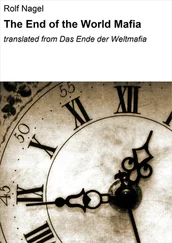“And, of course, in terms of empirical verification, the essence of their argument has been vindicated by the simple passage of time,” observes Paula Fredriksen, “which has continued not to end.” 81
Augustine’s stern and austere approach to Revelation, however, was never wholly successful in extinguishing the fires that the text was meant to ignite in the hearts and minds of its readers and hearers. Just as John had surely intended, the word-magic of Revelation was irresistible. For men and women who were forced to cope with the daily stresses and intermittent terrors of life in the medieval world, the book of Revelation held out the promise that plague, famine, pestilence, and war would be followed by revenge against one’s enemies on earth and the reward of eternal life in a celestial kingdom—and not just someday, but soon.
For the true believer, it is easy to explain the failure of the world to “end on time” without dismissing Revelation a mere allegory or, for that matter, a set of failed prophecies. The other way to read the book of Revelation is based on the conviction that divine secrets are surely encoded and enciphered in the text but that the readers of Revelation have so far failed to understand them. After all, the apocalyptic tradition is based on the thrilling notion that the real meanings of Revelation are hidden in plain sight and that “the mind which hath wisdom,” as John puts it, will discern and understand the divine secrets. 82
So the medieval Bible literalists, like their modern counterparts, insisted on reading the book of Revelation as divine prophecy, and they continued their tireless efforts at code breaking. The best example, then as now, is the effort to identify the villain who is described in Revelation as the “beast.” As early as the third century, a Roman bishop called Hippolytus (ca. 170–ca. 235) announced that the “beast” of Revelation is the very same arch-demon who is mentioned elsewhere in the New Testament in the epistles attributed to the apostle John: “Little children, it is the last hour! As you have heard the Antichrist is coming, even now many antichrists have come, by which we know that it is the last hour.” 83And thus began the ancient and enduring tradition of doing exactly what Augustine warned pious Christians not to do—that is, looking for specific people and events in the real world and matching them up with the characters and incidents in the book of Revelation.
The task is all the more daunting precisely because the book of Revelation, like the Epistles of John, suggests that there will be more than one candidate for the title of Antichrist. Indeed, the author of Revelation comes up with a whole bestiary of satanic creatures. He starts with the red dragon, a creature that he straightforwardly identifies as “that ancient serpent, who is called the Devil and Satan, the deceiver of the whole world.” 84But he also conjures up two more “beasts,” a seven-headed beast that rises from the sea and a two-horned beast that crawls up out of the earth, both of them serving as agents of the Devil. To the first beast, “the dragon gave his power and his throne and great authority,” and the second beast compels humankind to offer worship to the first beast. 85
Such ambiguities and complexities have demanded the attention—and taxed the imagination—of the readers of Revelation for the last two thousand years. Of course, one simple and compelling answer suggests itself when the text of Revelation is restored to the historical context in which it was first composed. Most modern scholars agree that John intends the beast from the sea to symbolize imperial Rome, with each of its seven heads representing a different Roman emperor. And he intends the beast from the land to symbolize the provincial gentry in the seven cities of Asia Minor whose aping of their Roman overlords so disgusted the author. Some of the earliest readers of Revelation, like the scholars who came long after them, sought to identify the “beast” with one or another of the reigning Roman emperors of antiquity.
The single most famous and provocative clue to the identity of the Beast of Revelation has always been the alphanumeric code that is expressed in the number 666: “Here is wisdom,” explains John. “Let him that hath understanding count the number of the beast: for it is the number of a man; and his number is six hundred threescore and six.” 86The key to the code, as we have seen, is the numerical value of the letters in the Hebrew, Greek, and Latin alphabets. By rendering the letters in a name as a series of numbers, it is possible to come up with “the number of a man”—that is, the numerical value of the letters in his name.
Nero, the first-century Roman emperor who has been depicted as a monster in Jewish, Christian, and pagan sources alike, has always been a favorite candidate because the numerical value of the Hebrew letters that spell “Nero Caesar” is, in fact, 666. The fact that Nero died an apparent suicide in the year 68 has never discouraged some readers of Revelation from regarding him as the Antichrist who is yet to come. John, after all, writes that the Beast “was, and is not, and shall ascend out of the bottomless pit,” which has been interpreted to mean that Nero lived, died, and will be raised from the dead to reign again in the end-times. 87And, in fact, the notion of a resurrected Nero explains an otherwise deeply enigmatic line in Revelation about the seven-headed beast from the sea.
“One of its heads seemed to have a mortal wound,” writes John, “but its mortal wound was healed, and the whole earth followed the beast with wonder.” 88
John, who borrows freely from pagan sources, may have been inspired by a tale that was told about Nero in ancient Rome. According to a street rumor that was later elevated to the stature of a myth, Nero did not actually die by a self-inflicted knife wound during the tumult of a general uprising at the end of his reign; rather, the wounded emperor sought refuge with the Parthians, an enemy of ancient Rome, and would be miraculously sustained in life until the day when he would return to reign over Rome again. The tale was turned into a sacred prophecy of resurrection and return in one of the Sibylline Oracles.
“At the last time, there shall come from the ends of the earth a matricide,” the Sibyl predicts, identifying Nero by reference to the belief that he murdered his own mother. “He shall gain all power, and that for which he perished he shall seize once again.” 89
So John may have repurposed the pagan myth of Nero redivivus— the “returned Nero”—as a vision of the end-times. But Nero is hardly the only historical figure who has been written into the pages of Revelation by its imaginative and enterprising readers. Indeed, the cast of characters in Revelation has been made to play an astounding range of roles, and each generation has churned up new candidates for the title of the Antichrist. The Beast of Revelation, as it turns out, is a man for all seasons.
Even as Augustine was advocating for a spiritual reading of Revelation, for example, some of his fellow clerics were scaring the wits out of their congregants by conjuring up the monsters and malefactors who stalk its pages and placing them in the here and now. Martin of Tours (316–397)—a visionary who believed that he had once seen the Devil with his own eyes—was convinced that the “beast” of Revelation was alive and well somewhere in the world, the flesh-and-blood spawn of the Devil himself, sired in the womb of an unwitting woman and destined to “assume power as soon as he reached the proper age.” 90One of Martin’s disciples, a man called Sulpicius, spread the same chilling message after Martin himself was dead and gone. Indeed, he anticipates the harum-scarum plotline of The Omen by a millennium and a half.
Читать дальше










